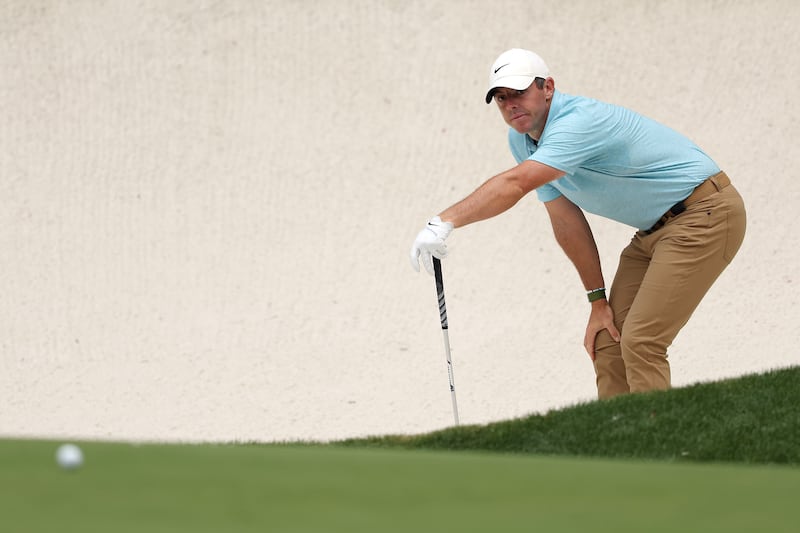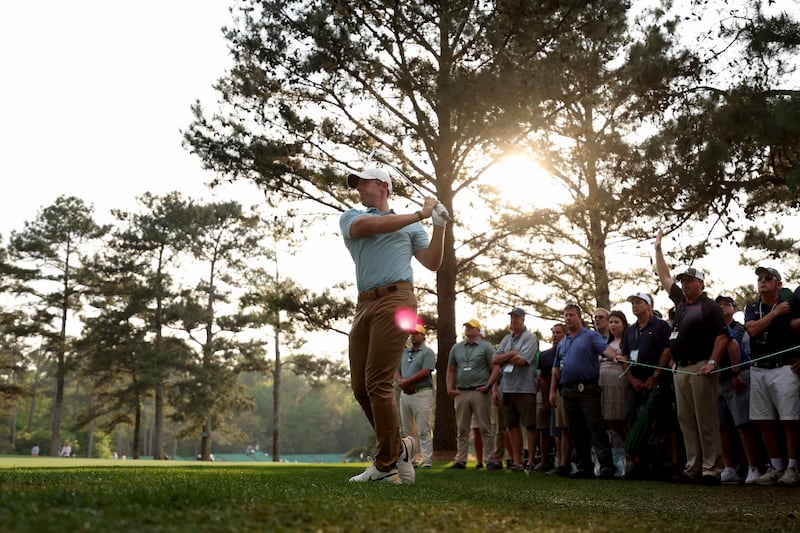The only thing which seemed to go Rory McIlroy’s way was something out of his control. Shortly after he finished his second round on Friday evening, the weather siren sounded to end play for the day. The timing was perfect for the Northern Irishman, who had just finished a dismal day’s work and submitted his card knowing full well it was his last deed of the 87th Masters.
McIlroy had missed the cut, and, with the sound of the weather warning coinciding with his visit to the recorder’s room, it meant he could exit the grounds – directly to the car park without even the need to visit the locker room – without fulfilling any media work. No print. No radio. No TV. Not a word to anyone.
We didn’t need to hear from McIlroy, however, to know that this was not how it was meant to be. We knew. Everyone knew.
In the weeks and days before his ninth and latest bid to complete the career Grand Slam, all the pieces of a rare jigsaw seemed set to fall into place. This was his time, it felt; really, his time to join Messrs Hogan, Sarazen, Player, Nicklaus and Woods as a sixth member of the exclusive club to have won all four Majors. Finally, his time to wear the green jacket.
RM Block
For McIlroy, the Masters has been the one Major to beguile only to spurn. Augusta National itself can entrap and snare, playing with a man’s mind; and McIlroy, more than most, had found its trap before. Only Greg Norman, perhaps, had experienced its double-handed beguilement and rejection in any similar manner.
But this rejection seemed different. The masterplan had seen McIlroy visit Augusta National time and time again in advance of the Masters, to a point where his comfort levels were where he wanted them to be. There were the tales of taking 19 putts in one of those practice rounds. Of jetting in with Shane Lowry for a final reconnaissance where they’d played a drawn-out round in blissful peace and tranquillity. He had found a comfort level like never before.

And, of course, McIlroy’s equipment travails – which manifested most notably at the Players where he missed the cut – were well documented but seemingly resolved in the time between the PGA Tour’s flagship and the arrival of the Masters by TaylorMade finding a more suitable driver and reducing the shaft by half an inch to 44 inches.
There was also the acquisition of a Scotty Cameron Newport GSS putter.
In his early stroke play tournaments on the PGA Tour this season, McIlroy – using a TaylorMade Spider Hydro Blast mallet putter – had ranked 133rd from four to eight feet; ranked 173rd in the critical Strokes Gained – Putting statistic; and ranked 209th in average distance of putts made.
The three statistical categories combined to sum up a belief that something needed to be done with his putting, and it seemed that the switch to the Newport was vindicated by his performances at the WGC-Dell Technologies Match Play where he reached the semi-final and defeated Scottie Scheffler in the third-fourth placed playoff match.
But stroke play competition, with every stroke counting, and in a Major at that, and especially at the Masters, brought a different dynamic.
Where the driver adjustments proved a good move, and he had an average driving distance of 325 yards which ranked number two in the field at the Masters for his two rounds, the blade was a different matter. McIlroy scored over par on 10 per cent of the holes when hitting the green in regulation. The putter, after all, wasn’t the saviour it had seemed to be.
Of course, the putter alone could not take all the blame. McIlroy in the days leading up to the Masters had seemed totally at ease in his own skin, joking and relaxed (never more so than in the Par 3 contest) but also deliberate and focused on his work, whether it was on the range or the short game area or out on the course. With a scorecard in hand, and when things unravelled, that sense of comfort in his own skin evaporated.
One image in particular holds. It was of McIlroy, on the first hole of his second round, standing on the first green and glancing through the trees to the scoreboard by the 8th green which showed Brooks Koepka on top. As McIlroy prepared to putt, a huge roar came from the nearby green where Koepka eagled and increased his lead. In those few moments, the enormity of McIlroy’s chase had grown. It proved too great an ask.

The upshot was that McIlroy’s work was done by Friday night and that quest for the Masters will likely hide in the recesses of his mind for the best part of another 12 months.
Shane Lowry, who had spent so much time in McIlroy’s build-up preparations, didn’t see it coming either. “To be honest, I felt like he was going to have a good week. But that’s golf. A lot of times you don’t get what you deserve. It’s obviously been very tough for him. I’m sure he’ll get over it. I’m sure he’s fine,” said Lowry.
McIlroy doesn’t have long to dwell on things. He is back playing in this week’s RBC Heritage at Hilton Head (one of the designated elevated events on the PGA Tour) and, down the line, there are another three Majors: the US PGA in Rochester, New York, next month; the US Open at Los Angeles Country Club; and the British Open at Royal Hoylake.
Each week and month going forward will be enough in itself to occupy his thoughts. Yet, swirling around too, like it or not, will be how he can make Augusta National as comfortable in the days of the Masters as it is when every shot doesn’t count.























